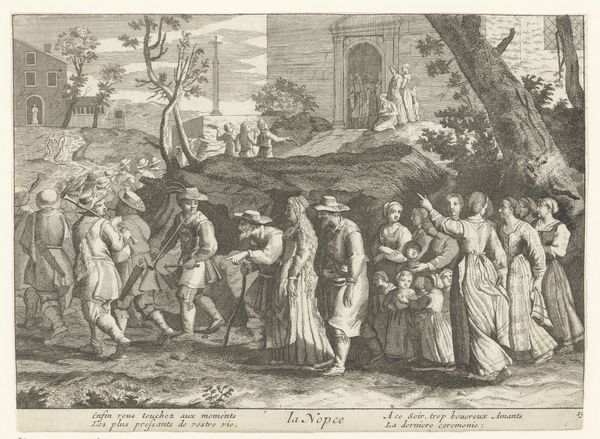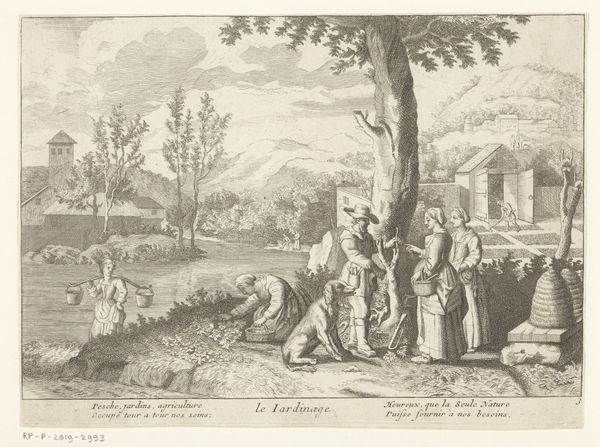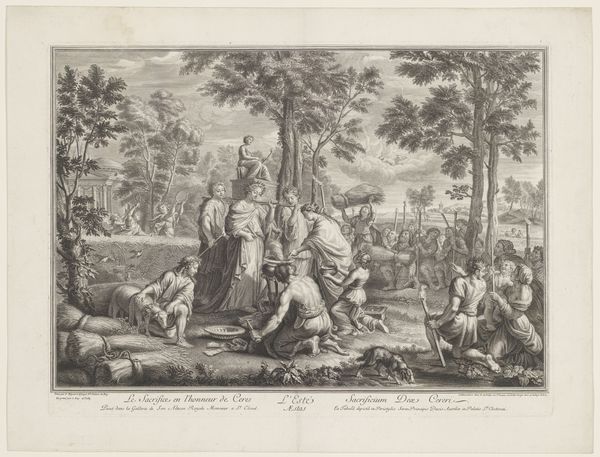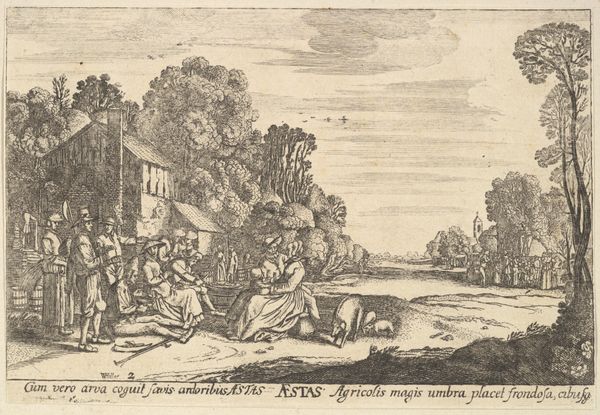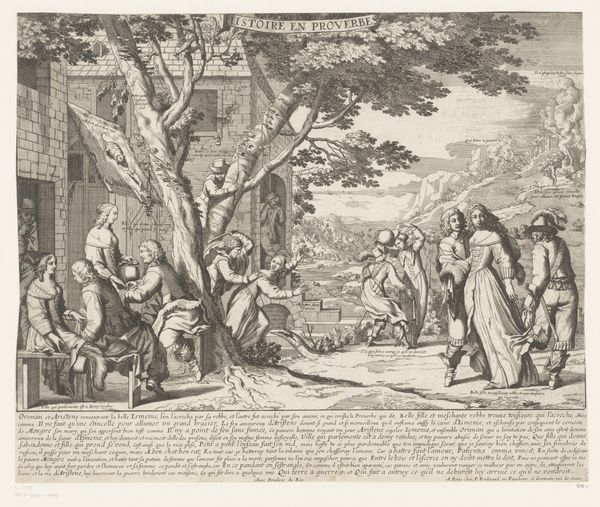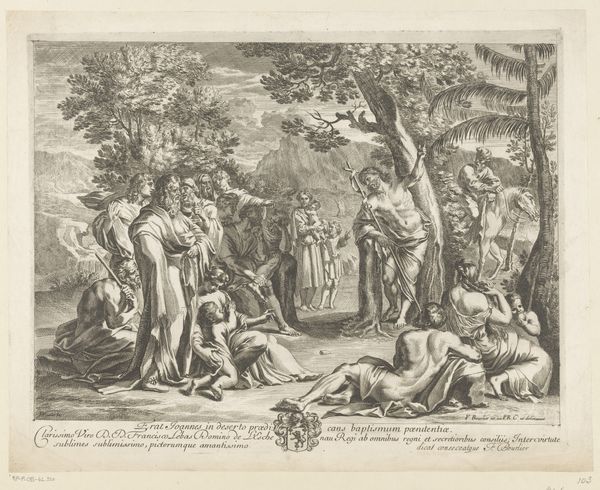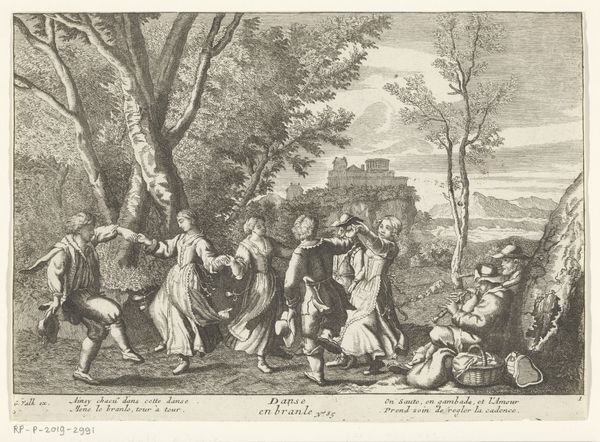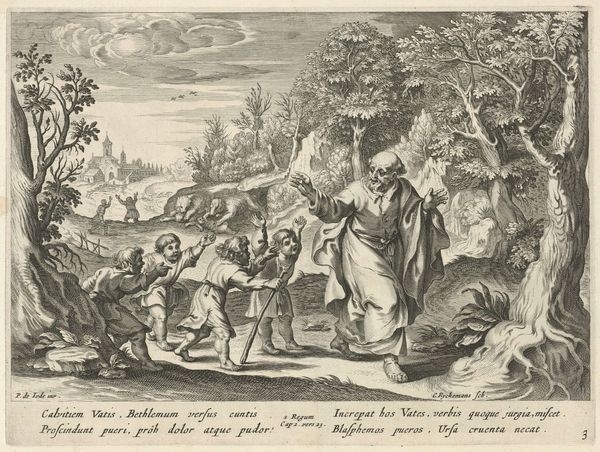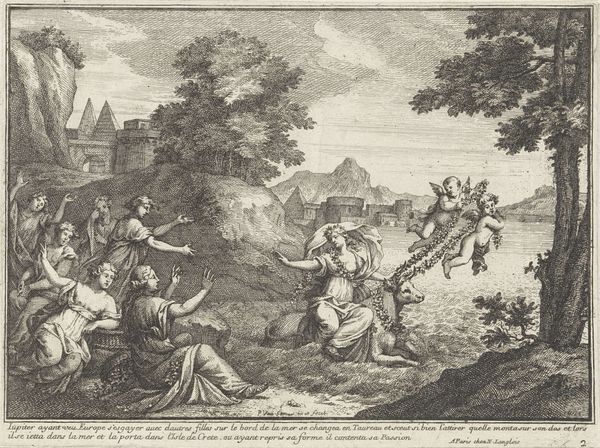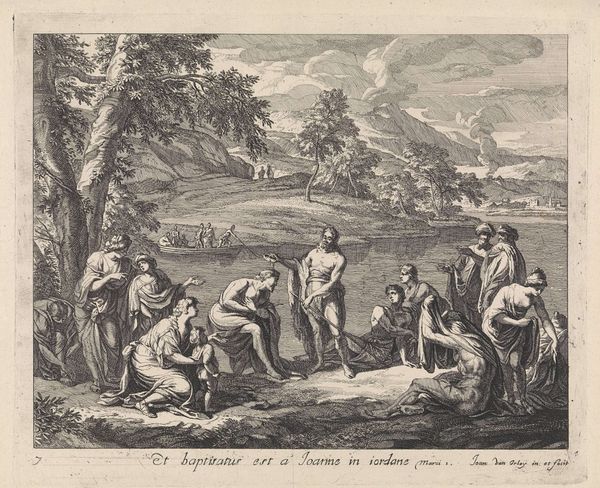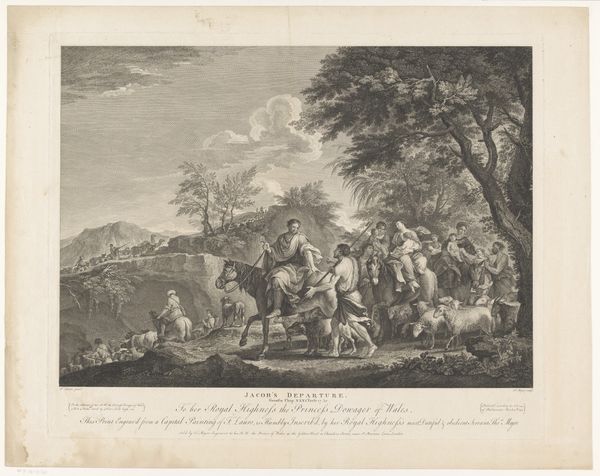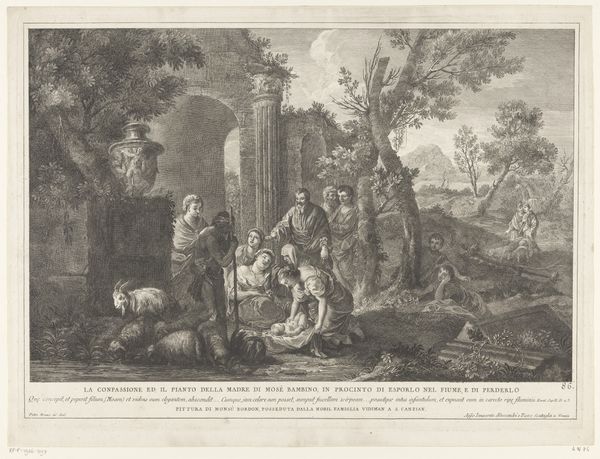
#
mechanical pen drawing
#
pen illustration
#
pen sketch
#
pencil sketch
#
old engraving style
#
cartoon sketch
#
personal sketchbook
#
pen-ink sketch
#
pen work
#
sketchbook drawing
Dimensions: height 171 mm, width 230 mm
Copyright: Rijks Museum: Open Domain
Curator: This intriguing drawing, "Figuren een spelen een spel blindeman," from between 1661 and 1726, is unsigned and utilizes the very direct and accessible medium of pen and ink. Editor: Exactly, there's a kind of folksy charm about it, this scene of people playing blind man's buff in a landscape. How do you see this artwork operating within its cultural moment, focusing on its materiality and methods of production? Curator: Consider the social context. This wasn’t produced for a royal collection, nor does the work betray aristocratic habits of commissioning artists to depict heroic or self-aggrandizing scenes. Instead, this work, crafted simply with pen and ink, speaks to the rising accessibility of art materials. How does that availability of tools shape our understanding of the themes present, like leisure and play? Editor: I hadn't thought about the ease of producing it in that light. Maybe the charm is due to the connection we sense with everyday labor. It feels more spontaneous, less 'high art', as if sketched directly from observation. Are you suggesting the material itself challenges that divide? Curator: Precisely. Think of the labor involved in producing this image compared to, say, an oil painting of the same period. Pen and ink sketches facilitate the rapid documentation of everyday life, bringing us closer to the materiality of leisure, its processes, and even its consumption. And look closely at how the artist uses line – is it economical? Is it refined? How does that contribute to a feeling that labor – perhaps even rural labor – is being valued? Editor: The line work *is* quick, very descriptive but not precious. I guess by bypassing more formal artistic avenues, the creator puts the focus squarely on the lived experience depicted. The pen allows them to make it as they see it. Curator: And to then more readily share it. The drawing becomes a form of social currency. A reminder that access to the means of production shapes what stories get told and how. It really pushes back against notions of unique artistry that separate the master from, say, the weekend hobbyist, doesn’t it? Editor: Absolutely, viewing art through its material and the labor involved creates an alternative viewpoint, breaking down the barriers that usually come up for discussions in art. It makes you appreciate the choices made.
Comments
No comments
Be the first to comment and join the conversation on the ultimate creative platform.
